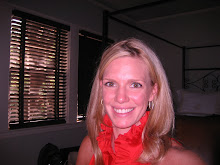Thursday, July 29, 2010
Student Learning
Saturday, July 24, 2010
School/District Improvements
Wednesday, July 14, 2010
Writing for REAL!
Writing for REAL!
Writing is an act of creation, communication, and expression.
We make writing real by letting students know they have a voice and their words are valuable…they don’t have to be published….their voice matters.
Imagine only – paints a picture for your mission…add a visual.
It’s the rallying of others around your message that will get the attention from others. You need readers to stop and pay attention.
Message and meaning should lead before spelling and grammar!
*Donald Graves on writing – what do you write about? You write about the first thing that comes to your mind. You write in front of the kids. Then the class becomes a class of writers. After that you share your writing. I AM A WRITER!
Have a journal wherever you go…take pictures and write about…notes on life. Things you notice, moments of clarity.
Writing Territories:
Put it on the wall! A list of Who? What? Why? Post all the formats of writing!
In collecting your writing territories, consider?
What I wonder?Think of Wonder – make a wonder box or wonder bag. Writers are anthropologists…they study life.
Who I am as a writer –
· I SEE my goals
· I know WHO I’m writing to
· I’ve defined the HEART of my message
· My ACTIONS support why it’s important
· I TAKE my reader to new places
Making Writing REAL:
· Would a real writer do this?
· Take pictures of what writers look like and what they do
· What is their reasoning for writing?
Capture some Writers!!!
Rules of Writing:
1. Writers write what they know about, care about, and wonder about
Heart Mapping – map out what you are diligently willing to explore thinking and writing about. Walking kids step by step to design a writing map.
http://kc3rd.pbworks.com/f/WriteFromtheHeart.pdf
http://www2.scholastic.com/content/collateral_resources/pdf/h/HPLesson1_Final.pdf
2. Writers learn from other writers! Find authors on Skype! Figure out who inspires them!
The best writers are the best readers. Kids must see the link and think insightfully about who the writer is. WRITER TO WRITER: What writers inspire you and what does it make you think about?
“Make Writing a Habit” – Stephen King
3. Writers learn from READERS!!!
Connect & Complete
Cluster Map - http://www.clustrmaps.com/ - see where your readers are coming from!
What do Writers Need?
· TIME – you can’t get good at anything if you don’t have time – long blocks of time! You cannot force a writer to get over the blank page.
· AUDIENCE – it has to be more than you…it can be GLOBAL! Every moment they need to see another writer is going to give me feedback.
Big Universe – http://www.biguniverse.com/?gclid=CLCw0Lqo66ICFRBx5QodHTnygA
Real Writer - http://realewriter.com/
National Gallery of Writing - http://galleryofwriting.org/
Publishing Books - https://www.lulu.com
~Speaking is a form of communication! Podcasting!!!
http://mps.wes.schoolfusion.us/modules/cms/pages.phtml?pageid=115312
· YOU – they need YOU! They need the privilege of what it means to be a good writer!!! They need you to model!

